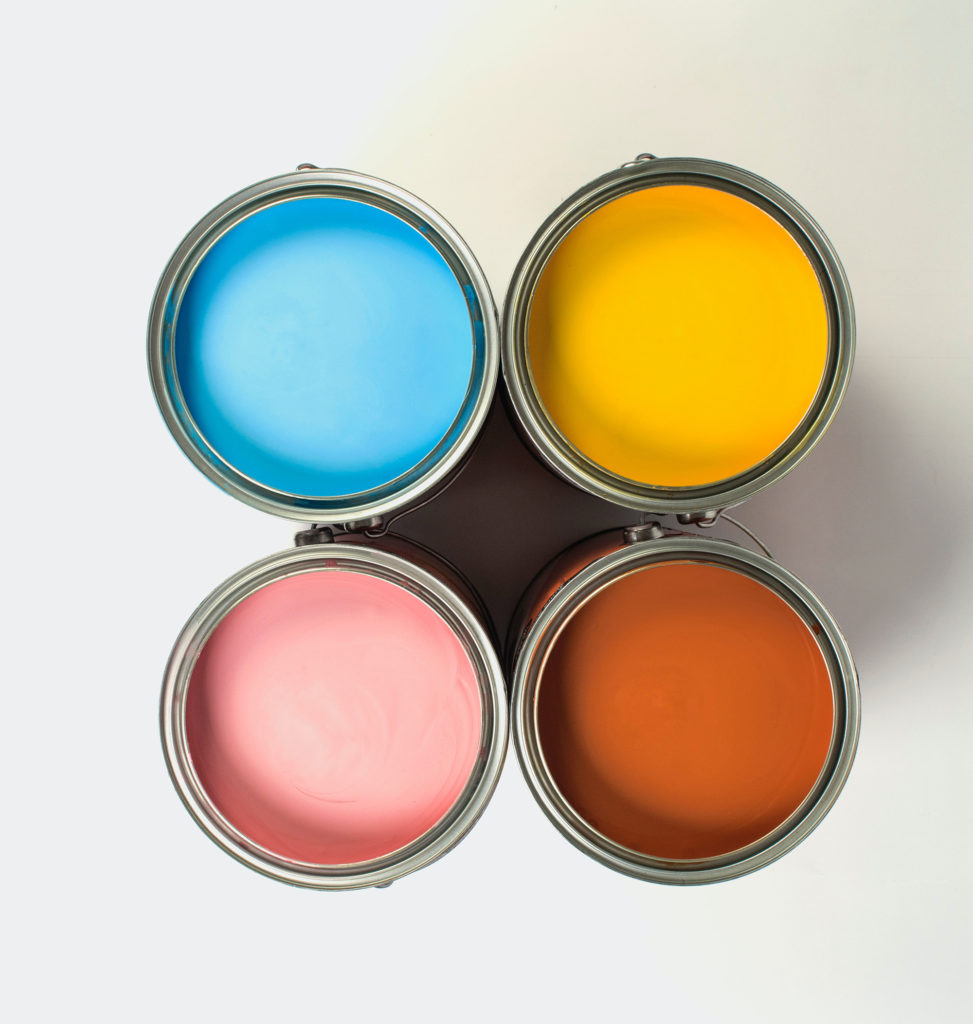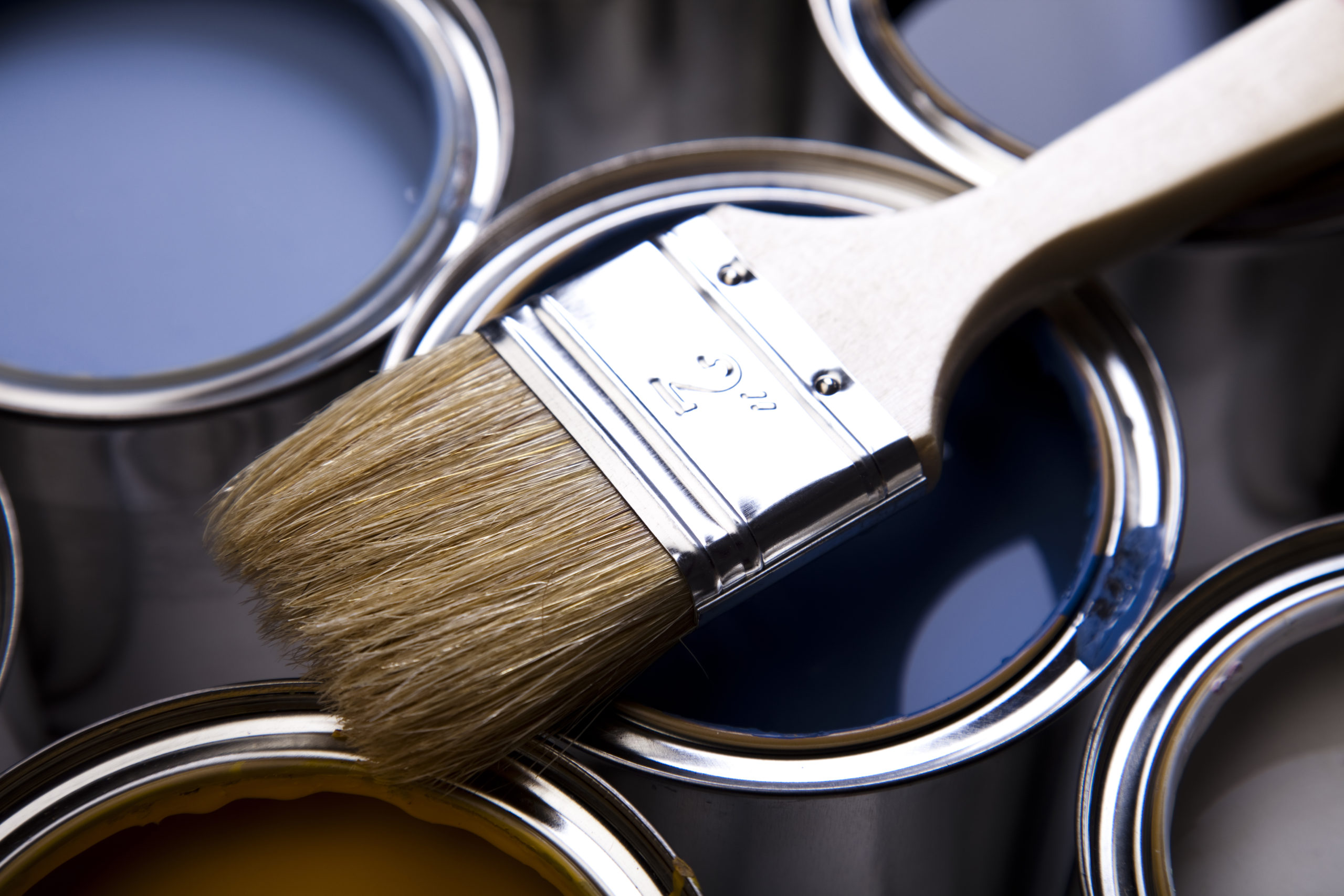One of the best ways to spruce up a kitchen and add some much-needed flair is to repaint your kitchen cabinets. It’s far more affordable to have your kitchen cabinets painted (or repainted) than to replace them entirely. The first step is to sand and prime, then decide on the type of paint that will work the best for your needs depending on your existing cabinets.
After you’ve finished preparing them, it’s time to decide what type of paint you should apply to them. Chiefly, it comes down to whether you want to use traditional oil paint or the more modern and widely available latex paint. There are advantages and disadvantages to both, be sure to keep your circumstances and priorities in mind when selecting your paint.
Are your Cabinets Already Painted?
If your cabinets already have paint on them, this is a quick decision: use the same type of paint used to paint them the first time. Latex paints do not adhere well to the oil paint’s glossy surfaces, and vice versa; applying oil paints over latex paint could cause peeling, blistering, and uneven coverage.
A quick way to tell which type of paint is on your cabinets is the alcohol test. Simply rub a cotton ball soaked with rubbing alcohol over the area. If the color comes off, it’s latex paint. If it does not, it’s oil paint.
If you absolutely must use latex paint over oil paint or don’t know what type of paint is on your cabinets and want to use latex paint, it is crucial to properly prepare the cabinets and use 100% acrylic latex paint. Start by sanding them with fine-grit sandpaper, giving them a good scrub to remove debris, and priming them with a bonding primer formulated to stick to glossy and hard-to-paint surfaces. Then plan to apply at least two coats of the latex paint to your cabinets, allowing time for each layer to cure.
If your cabinets are paint-free, then you’ll only need to figure out if you want to use oil or latex paints.

Oil vs. Latex: Which one is Better?
Latex paint
For the most part, latex is the most convenient paint, as it dries in as little as one to two hours and can easily clean up with water. Latex is less likely to cause damage to your cabinets, even if they are composed of a more porous material such as MDF. Latex paint is also more widely available than oil paints. New varieties of latex paint are rapidly improving some of the more traditional durability problems. The major downside of latex paints is that they don’t provide the same finish oil paints do, and they can take up to two weeks to cure fully, leaving them susceptible to damage during that time.
Oil Paint
Oil Paint has a reputation for being easy to apply and boasting a very stunning finish that’s quite impressive when done right. Still, it contains much higher quantities of volatile organic compounds (VOCs) and has the potential of causing some damage to your cabinets if applied recklessly. Oil paints also have a notorious reputation for taking extremely long periods of time to dry. It often takes a whole day before you can touch your cabinets again after applying the last coat of paint, which is clearly not very practical for most people.
VOC Content
There is a far more significant reason to choose latex over oil paints than just the respective time taken for the two to dry, however. As mentioned above, oil paints have high quantities of VOCs, while latex paints do not. The problem with VOC’s is that they can become a threat to your health in close contact with your food, cleaning equipment, and kitchen utensils.
There are no definitive studies that conclude that the use of oil-based paints in kitchens will become a health hazard for you. Still, there has been substantial documentation of high VOC levels causing minor conditions such as fatigue and eye irritation.
Yellowing is another problem for oil paints with a large VOC content. The color you chose becomes less crisp over time. The day that you first apply your fresh coat of oil paint is the day that your kitchen cabinets will have their sharpest finish, and afterward, you’ll only see a decline in their quality.
In contrast, latex paints with their relatively small VOC content are not linked to any history of ailments, nor have they been documented to wear over time in the same way that oil paints tend to do. Although traditional latex paints are typically less durable, they are designed to be easily cleaned and are not likely to be worn over time. More modern versions of latex paint, especially water-based ones, tend to have greater durability, but they still don’t compare with oil paints in terms of their ability to withstand scratches.
Overall the average consumer tends to go with latex paints, which pose a much lower health hazard to you, dry up quickly, and are quite affordable. Oil paints still have their use; however, if you’re insistent upon having that sharp finish that oil paints provide and don’t mind waiting for a full day before being able to access or use your cabinets again, then perhaps oil paints are a better choice for you.
For most people, though, in the overwhelming majority of possible circumstances, latex paints will prove to be the far better option, and I would personally strongly recommend opting for latex paints whenever possible for both convenience and safety’s sake.
